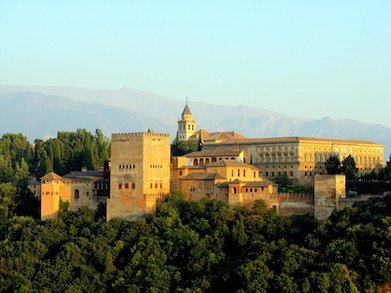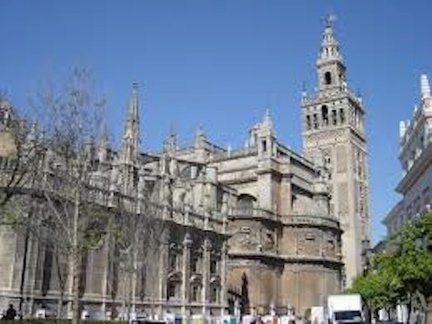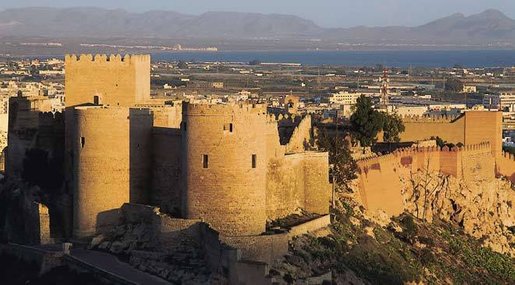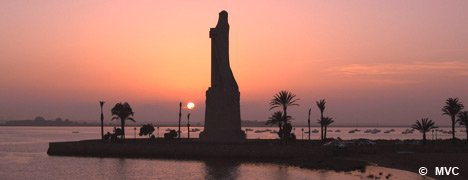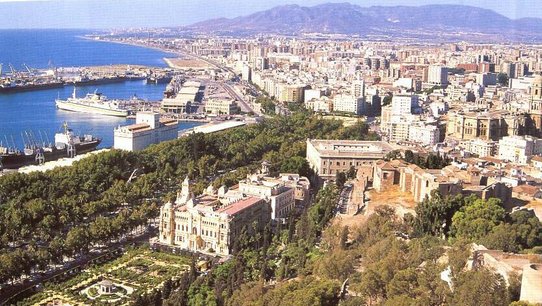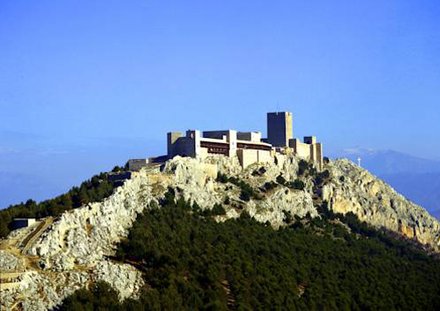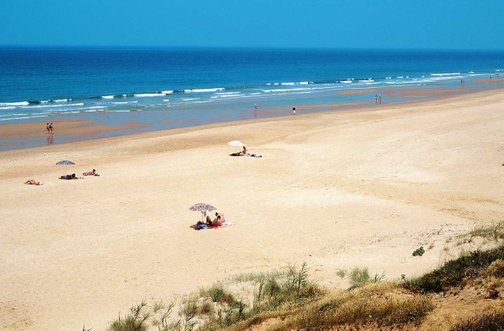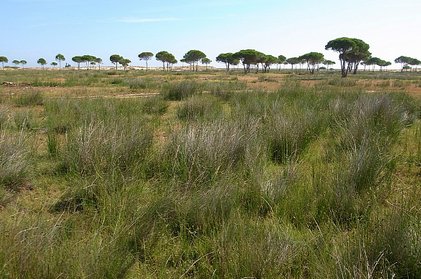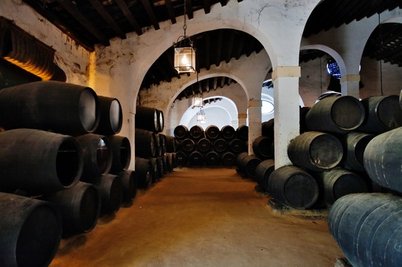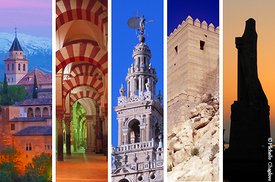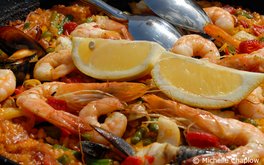Focus Andalucia
TOP 10 ATTRACTIONS
Top 10 Attractions in Andalucia
Andalucia has a rich history - the Moors played a huge part, leaving their mark in extraordinary buildings around the region. Columbus sailed from here, and the natural wonders of Andalucia are boundless, from rare birds to wonderful foods.
Here are our Top 10 attractions – of a very, very long list…
1. The Alhambra is a breathtaking Moorish palace overlooking the city of Granada.
Inside this UNESCO World Heritage monument, you'll find magnificent patios,
historic fountains and exquisitely decorated halls.
The name Alhambra comes from an Arabic root which means "red or crimson castle", perhaps due to the hue of the towers and walls that surround the entire hill of La Sabica which by starlight is silver but by sunlight is transformed into gold. But there is another more poetic version, evoked by the Moslem analysts who speak of the construction of the Alhambra fortress "by the light of torches", the reflections of which gave the walls their particular coloration. Created originally for military purposes, the Alhambra was an "alcazaba" (fortress), an "alcázar" (palace) and a small "medina" (city), all in one. This triple character helps to explain many distinctive features of the monument.
2. The Mezquita in Cordoba is a mosque-within-a-cathedral.
When built, this UNESCO monument was the largest Islamic temple in the world.
Its distinctive striped arches are the iconic symbol of Cordoba.
The Mosque–Cathedral of Córdoba is a medieval Islamic mosque that was converted into a Catholic Christian cathedral. The mosque is regarded as the one of the most accomplished monuments of Moorish architecture. In planning the mosque, the architects incorporated a number of Roman columns with choice capitals. Some of the columns were already in the Gothic structure; others were sent from various quarters of Spain as presents from the governors of provinces. Ivory, jasper, porphyry, gold, silver, copper, and brass were used in the decorations. Marvellous mosaics and azulejos were designed. Panels of scented woods were fastened with nails of pure gold, and the red marble columns were said to be the work of God. The primitive part of the building, reared under the direction of Abd-er-Rahman I., was that bordering the Court of Oranges. Later, the immense temple embodied all the styles of Morisco architecture into one composition.[
3. Two of Seville's UNESCO monuments, the Cathedral and Giralda, and Alcazar,
between them encompass Gothic, Baroque, Mudejar and Islamic styles.
The cathedral is the world's largest.
Seville's Cathedral occupies the site of a great mosque in the late 12th century. Later, Christian architects added the extra dimension of height. Its central nave rises to an awesome 42 metres and even the side chapels seem tall enough to contain an ordinary church. The total area covers 11,520 square metres and new calculations, based on cubic measurements, have now pushed it in front of Saint Paul's in London and Saint Peter's in Rome, as the largest church in the world.
Alcazar: Most of the Alcazar was built for King Pedro the Cruel of Castile in the 1360's who, with his mistress Maria de Padilla, lived in and ruled from the Alcazar. Pedro embarked upon a complete rebuilding of the palace, employing workmen from Granada and utilising fragments of earlier Moorish buildings in Seville, Cordoba and Valencia. Pedro's work forms the nucleus of the Alcazar as it is today and, despite numerous restorations necessitated by fires and earth tremors, it offers some of the best surviving examples of Mudejar architecture.
4. Almeria's Alcazaba is a typical walled Moorish fortress,
set atop a hill above the port city which it was built to guard.
The Alcazaba of Almería is a fortified complex in Almería. The word alcazaba, from the Arabic word al-qasbah, signifies a walled-fortification in a city. In 995 Almería gained the title of medina ("city") by the Caliph of Cordoba, Abd ar-Rahman III: construction of the defensive citadel, located in the upper sector of the city, began in this period. The alcazaba, provided not only with walls and towers but also with squares, houses and a mosque, was to be also the seat of the local government, commanding the city and the sea nearby.
The complex was enlarged under caliph Al-Mansur and, later, under Al-Jairan, first king of the independent taifa of Almería (1012–1028).The Alcazaba has been used to film Conan the Barbarian, Indiana Jones and the Last Crusade, and Never Say Never Again as well as the syndicated TV series Queen of Swords used the inner courtyard and gardens.
5. Huelva city
Columbus set sail on his voyages of discovery to the New World
from near Huelva city, where you can see replicas of his ships.
Huelva and its environs is a Mecca for those interested in Christopher Columbus, with a number of significant tourist attractions relating to the famous explorer. Cristóbal Colón is thought by most to have been born in Genoa, Italy around 1451. After years of seeking funding support for an expedition which was to find a sea route to Asia, Columbus finally came to an agreement with King Ferdinand and Queen Isabella of Spain. They would back his expedition in return for dominion over the any new lands. Columbus would be awarded titles and, of course, a percentage of any fortune that was made. The rest, of course, is world history.
6. Málaga
Málaga city is known as the museum capital of Andalucia,
with collections of wine, cars and furniture complementing
Picasso and 19th-century paintings.
Whether you like wine, archaeology or cars; you’re interested in glass, contemporary art or 19th century painting, you’re sure to find at least one museum which will interest you in the city. Most visitors to Malaga go to the Picasso museum and his house, as the painter is the most famous son of the city, but there’s a new art museum now which focuses on Andalucian art – the Museo Carmen Thyssen.
Other recent openings include the Wine Museum, where you can learn about Malaga’s own vintages, while two private collections offer the quirkiest experiences: the Automobile Museum, with an ingenious fashion section for non-car fans, and the Glass and Crystal Museum, which also features antique furniture and paintings, all arranged by period. Contemporary art lovers mustn’t miss the CAC (Centro de Arte Contemporaneo), Andalucia’s foremost cutting-edge space. Heading back a few millennia, the archaeology museum has pieces from prehistoric through to Roman and Moorish times.
7. Parador in Jaen
One of Spain's most spectacularly located Paradors is in Jaen, in a
12th-century hilltop castle overlooking the city and the famous olive groves.
The Jaen Parador, also known as the Parador de Santa Catalina, has a spectacular setting: it is in a restored castle on a hill overlooking the ancient city of Jaen, and the countryside and mountains beyond. In Andalucia, this parador is second only to the Parador de Granada in terms of historical value and stunning location.The castle is built of beautiful pale stone, its walls falling away in a sheer drop down to the side of the mountain on which it is built. The feel inside the castle-hotel is medieval, with beautifully proportioned spaces: high, vaulted ceilings in the main hall, exposed stone walls, heavy carved wooden doors and arched corridors and windows. Good-sized rooms - there are 45 - have the same classical-Mudejar style: tiled floors, with amazing views of the city; some have wood four-poster beds and balconies.
8. Some of the finest beaches
in Andalucia can be found on Cadiz's Costa de la Luz, from
palm-fringed sweeps of golden sand, to hidden rocky coves.
The Costa de la Luz "Coast of Light" is a section of the Andalusian coast in Spain facing the Atlantic; it extends from Tarifa in the south, along the coasts of the Province of Cádiz and the Province of Huelva, to the mouth of the Guadiana River.
Aside from the beaches and the sunshine, there are ample opportunities and facilities for leisure activities, like fine dining, golf, kitesurfing, boating, and other water sports. The Costa de la Luz is especially noted for the beauty of its protected natural reserves and a number of first-rate natural attractions.
9. Doñana National Park
Europe's most important wetland, UNESCO-recognised
Doñana National Park is home to many rare birds, as well
as the endangered Iberian lynx.
The Parque Nacional de Doñana is one of Europe's most important wetland reserves and a major site for migrating birds. The parque itself and surrounding parque natural amount to over 1,300 sq km in the provinces of Huelva, Sevilla and Cádiz. It is internationally for recognised for its great ecological wealth. Doñana has become a key centre in the world of conservationism. Doñana is well known for its enormous variety of bird species, either permanent residents, winter visitors from north and central Europe or summer visitors from Africa, like its numerous types of geese and colourful colonies of flamingo. It has one of the world's largest colonies of Spanish imperial eagles. The park as a whole comprises three distinct kinds of ecosystem: the marismas, the Mediterranean scrublands and the coastal mobile dunes with their beaches.
10. Jerez de la Frontera
Lovers of sherry, currently enjoying a new surge of popularity,
can take bodega tours in Jerez de la Frontera, as well as enjoying
tastings of this fortified wine.
The city is the centre of the province's sherry dynasties, such as Domecq and Gonzalez Byass. It is well worth taking a visit to one of Jerez's many sherry 'bodegas' (literally cellar, but also used to mean wine producer and winery), from the mighty Gonzalez Byass, to the smaller ones such as Harveys. You can see how, and where, the five different types of the famous fortified wine are made, usually in huge cathedral-like buildings lined with barrels, including the all-important blending, even the making of the barrels, and then taste them for yourself. By far the most popular sherry here in Spain is the dry, pale straw-coloured fino, which is drunk chilled, and diluted with lemonade to make 'rebujito' at ferias. Foreign tastes tend more towards the cream, such as Harvey's Bristol Cream, which is a blend of oloroso and dried Ximenez grapes. Many of Jerez's bodegas also produce brandy.
Copyright © Focus Andalucia All Rights Reserved

